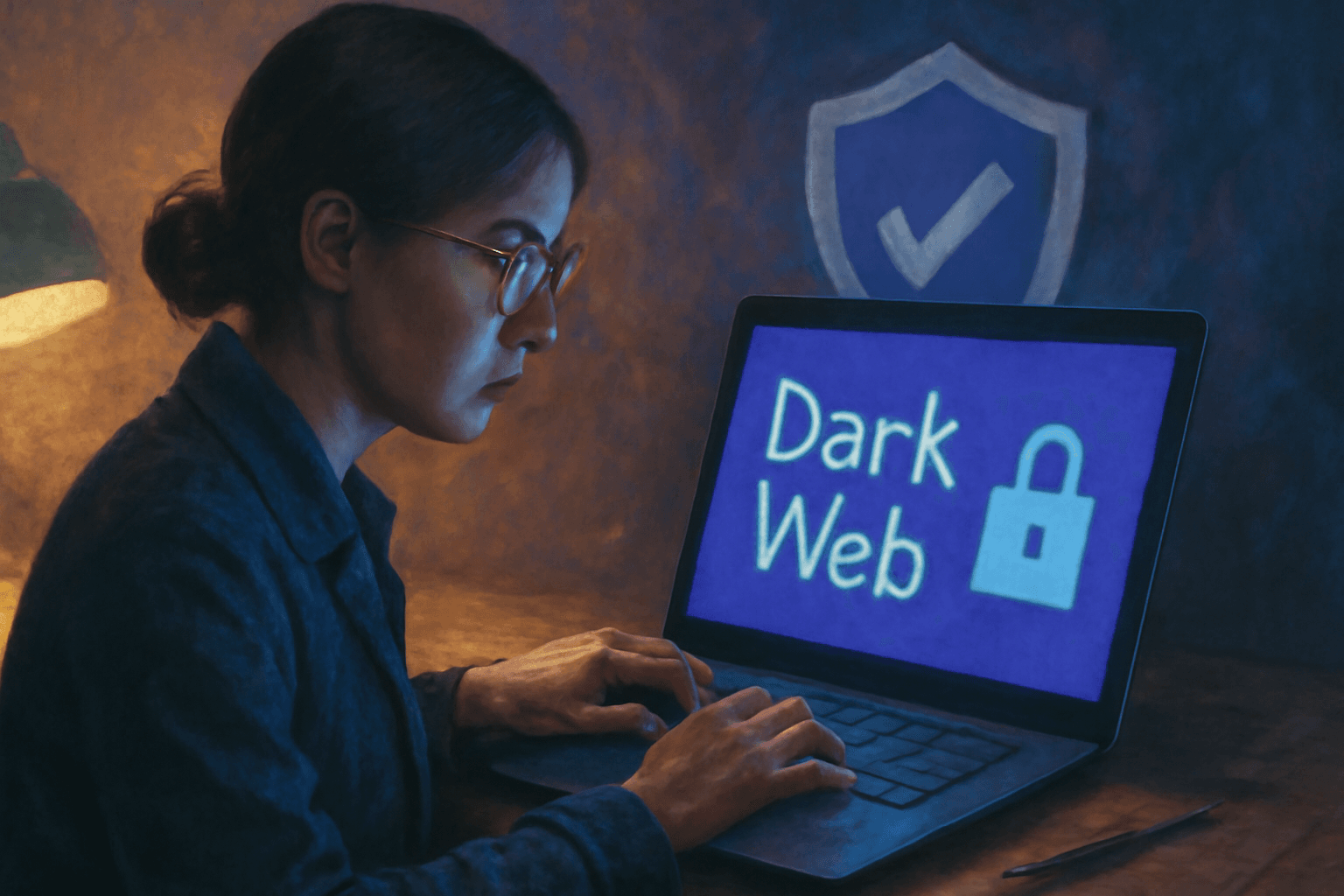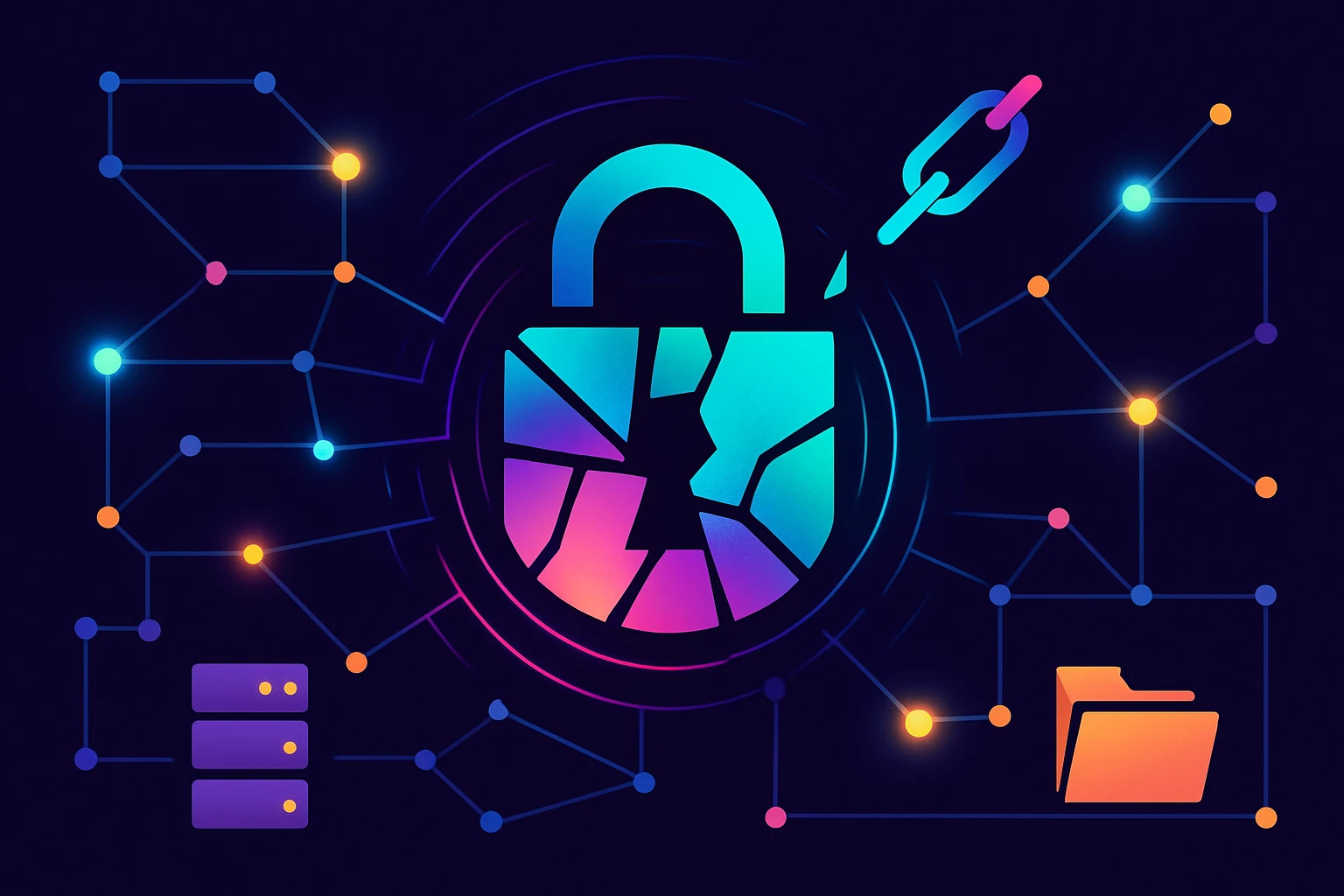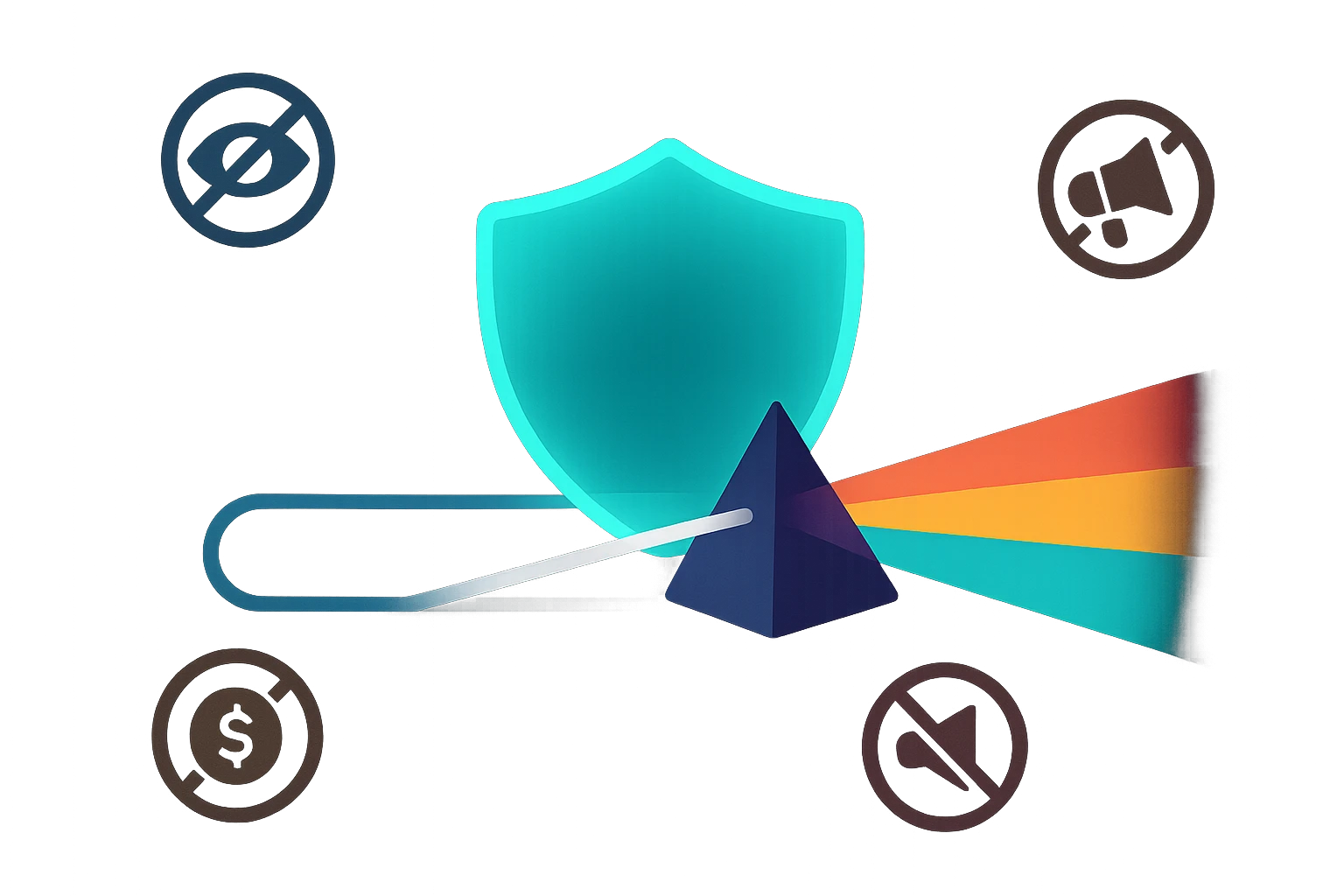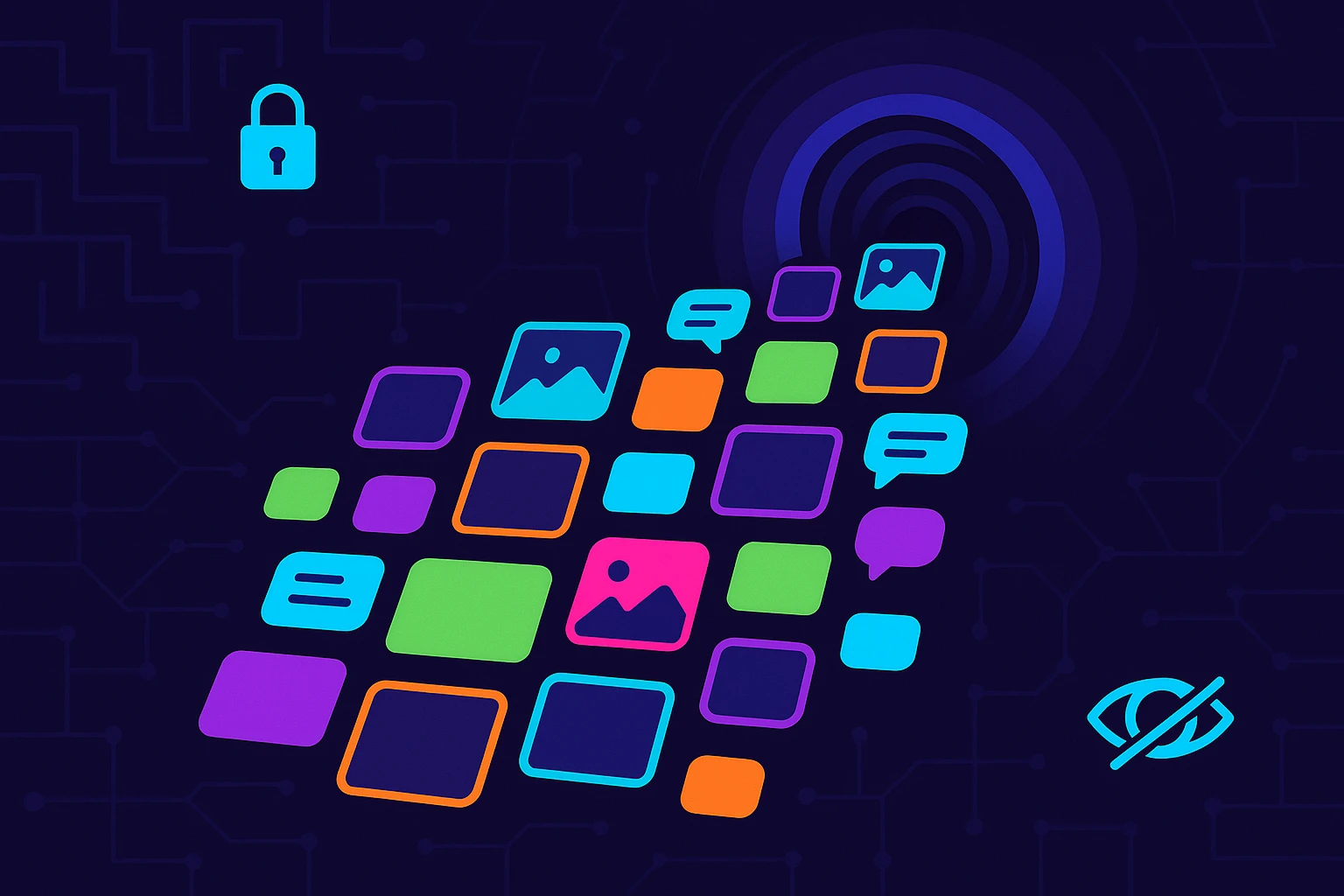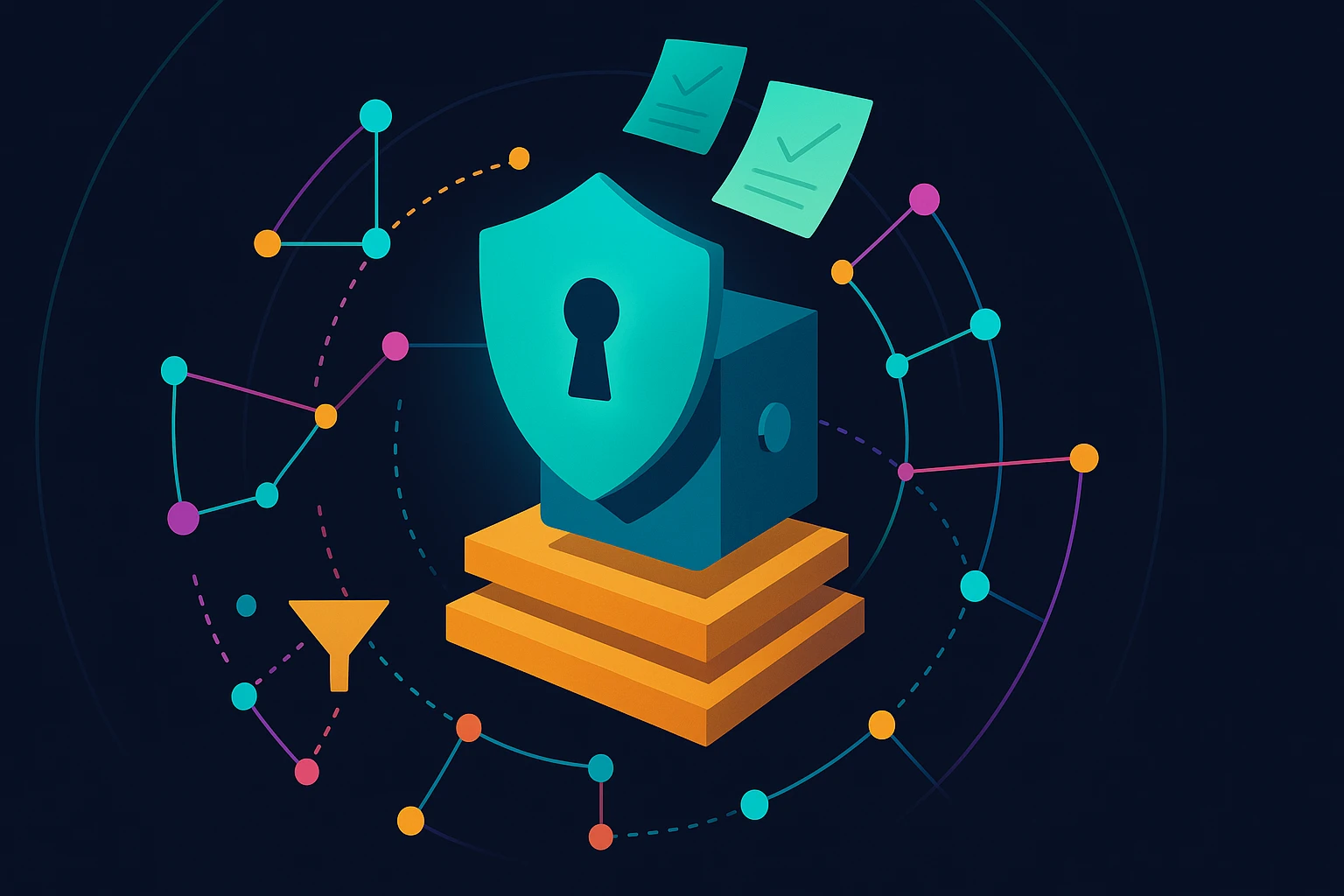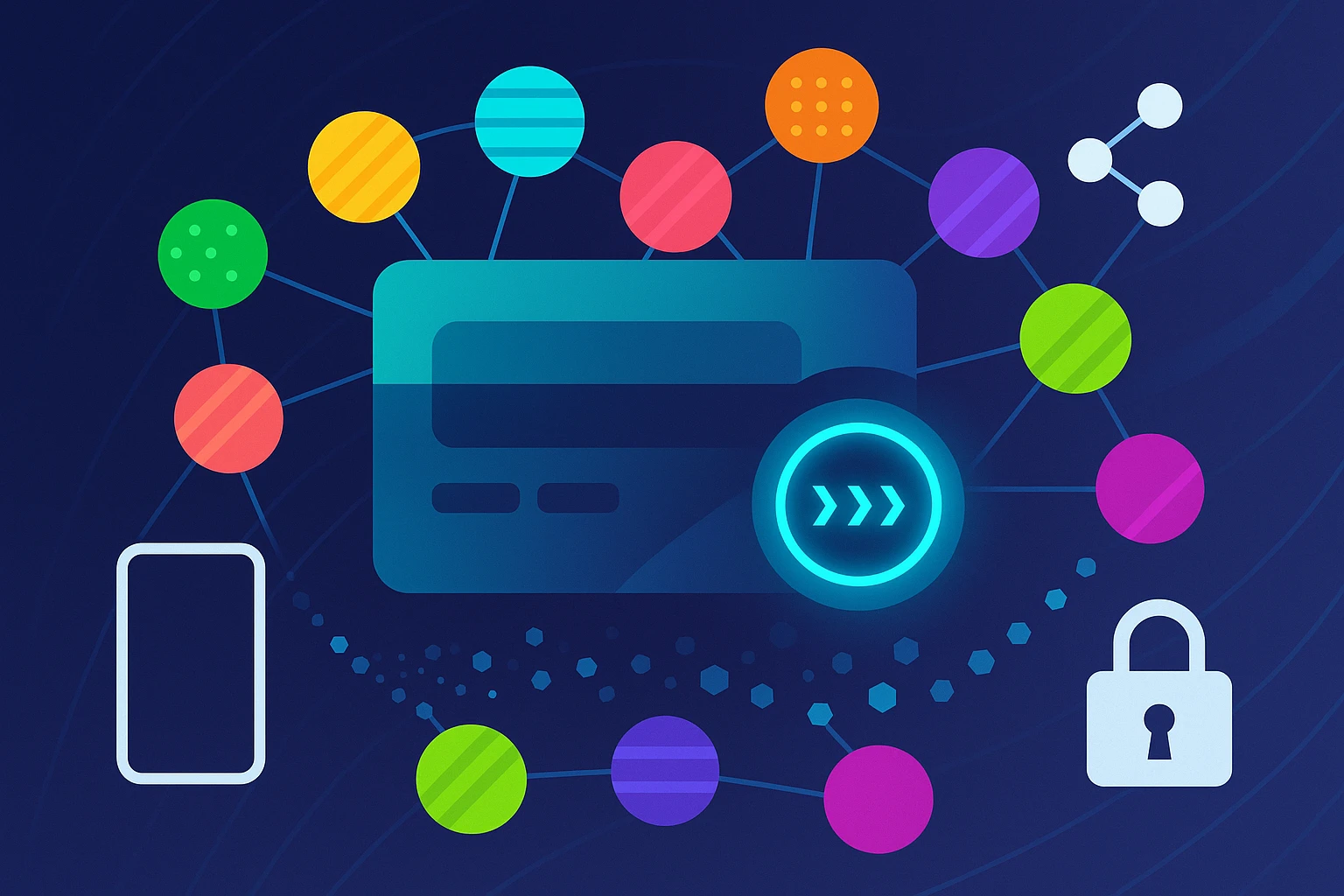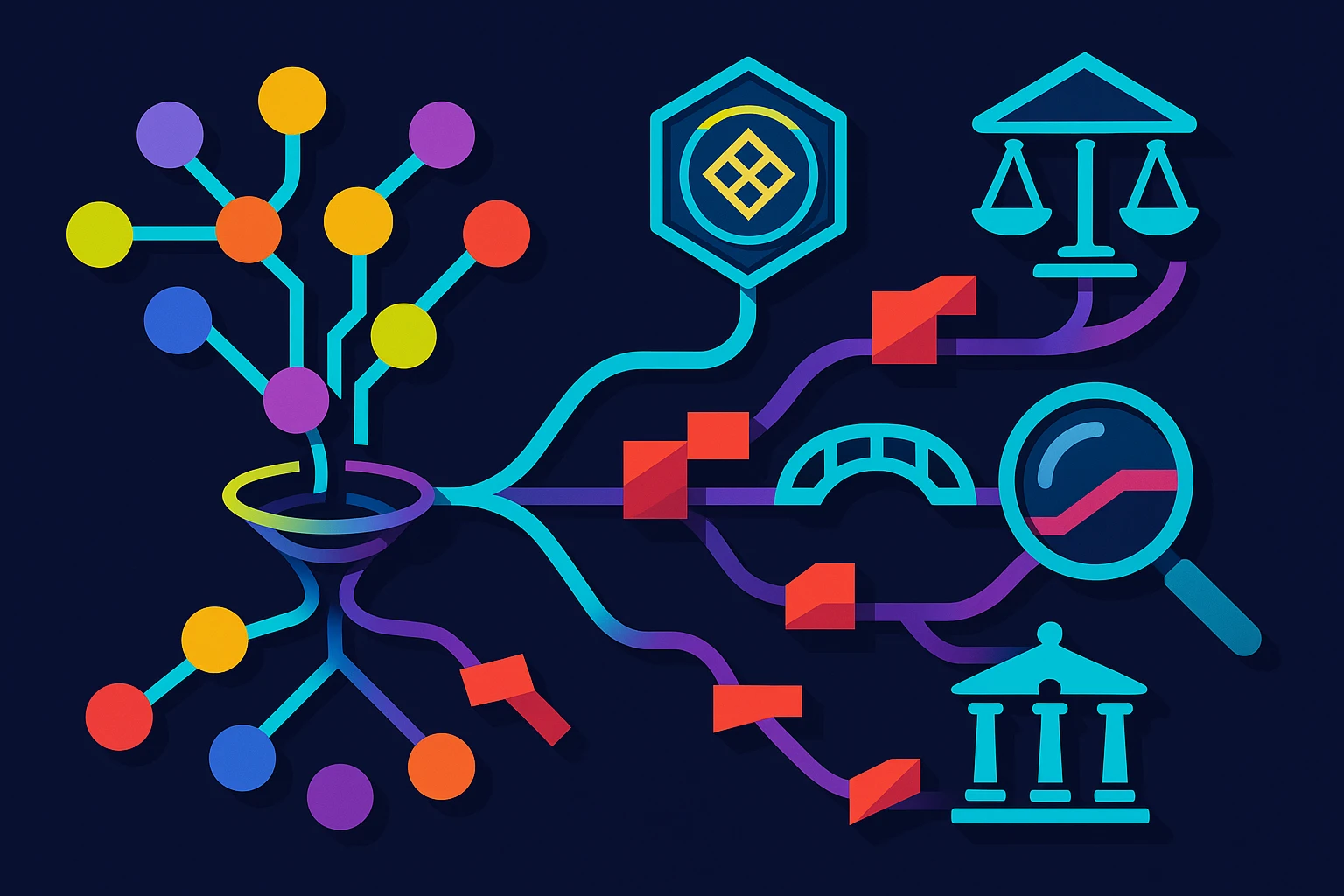Last Updated on May 14, 2025 by DarkNet
Journalists and researchers often explore the dark web to uncover critical insights and report on sensitive issues that demand anonymity. However, navigating this hidden part of the internet poses significant security risks, making operational security (OpSec) essential. OpSec encompasses the strategies and practices designed to protect identities, safeguard information, and minimize digital footprints. On the dark web—where threats such as surveillance, malicious actors, and misinformation abound—understanding and applying robust OpSec measures can mean the difference between safety and compromise. This article provides practical guidance to ensure journalists and researchers can safely access and utilize the dark web while maintaining their privacy and security.
Understanding the Dark Web: What You Need to Know
The dark web is a hidden segment of the internet accessible only through specialized tools and software, such as the Tor Browser, that anonymize users and obscure their online activities. Unlike the surface web—the easily accessible portion of the internet indexed by standard search engines—the dark web operates intentionally outside of public view. It is also distinct from the deep web, which broadly includes all content not indexed by search engines, such as email accounts, subscription databases, or private organizational data.
Contrary to popular myths, the dark web isn’t exclusively a hub for illicit activities. Although criminal elements do exploit its anonymity, the dark web is equally valuable for journalists, researchers, whistleblowers, and activists who rely on its privacy protections to communicate securely, avoid censorship, and conduct sensitive investigations. Understanding this nuanced reality helps professionals use the dark web responsibly, safely, and ethically.
Why OpSec Matters for Journalists and Researchers
Operational security (OpSec) is critical for journalists and researchers who explore the dark web, as it significantly reduces the risks associated with their investigative activities. These professionals frequently handle sensitive information, communicate with confidential sources, and expose corruption or criminal activities—tasks that inherently attract unwanted attention from hostile entities, such as cybercriminals, government surveillance agencies, or targeted cyberattacks.
Without robust OpSec, journalists and researchers risk severe consequences, including identity exposure, digital harassment, surveillance, or physical harm. For example, in 2020, journalists investigating extremist forums inadvertently revealed their IP addresses due to poor security measures, making them vulnerable to tracking and threats from violent groups. Similarly, researchers documenting illicit marketplaces have faced targeted phishing attacks designed to compromise their communications and sensitive data.
In another notable incident, a reporter covering organized crime networks had their devices infected with spyware after failing to adhere strictly to OpSec guidelines. The compromised data not only endangered their personal safety but also placed their confidential informants at risk.
These examples underline the critical importance of proactive OpSec practices. By diligently safeguarding identities, employing secure communication channels, and continually monitoring for threats, journalists and researchers can effectively mitigate risks and safely navigate the dark web, ensuring both personal protection and the integrity of their essential investigative work.
Essential Tools and Technologies for Dark Web Access
When accessing the dark web, journalists and researchers must use specialized tools designed to protect anonymity and ensure operational security. Below are essential technologies, their functionalities, advantages, and limitations:
Tor Browser
The Tor Browser is the most popular tool for securely accessing .onion websites on the dark web. It encrypts your traffic and routes it through multiple servers worldwide, masking your location and identity.
Advantages:
- Provides a high level of anonymity by obscuring IP addresses.
- Simple to install, user-friendly, and free.
- Specifically designed for secure browsing of hidden services.
Limitations:
- Can be slow due to multiple layers of routing.
- Vulnerable if improperly configured or if additional identifying information is shared by mistake.
Tails OS
Tails (The Amnesic Incognito Live System) is a privacy-focused, portable operating system designed specifically for anonymity. It routes all internet traffic through the Tor network by default, and it leaves no trace on the device used.
Advantages:
- Enhanced security and anonymity through built-in encryption tools.
- Leaves no persistent data after shutdown (amnesic).
- Reduces risk of malware or tracking software compared to standard operating systems.
Limitations:
- Slightly technical setup; may require initial training.
- Operates slower than traditional operating systems due to constant encryption and Tor routing.
- Limited to applications pre-installed or compatible with Tails.
Virtual Private Networks (VPNs)
A VPN encrypts your internet traffic and hides your IP address by rerouting your connection through a secure server in another location.
Advantages:
- Adds an extra encryption layer, enhancing security when combined with Tor.
- Masks geographical location, preventing ISP-level tracking.
- Useful for accessing blocked resources or avoiding regional censorship.
Limitations:
- Does not inherently provide the same anonymity level as Tor; VPN providers may log user activities.
- Quality and security standards vary significantly among providers—requires careful selection.
- Potential for creating a false sense of complete anonymity.
Using these tools in combination—such as Tor Browser with Tails OS and a reputable VPN—maximizes protection, significantly reducing the risks associated with navigating the dark web. However, users must remain vigilant, follow best practices, and regularly update their security measures to stay truly secure.
Best Practices for Secure Dark Web Browsing
To safely navigate the dark web, journalists and researchers should follow these essential security steps. This actionable checklist helps minimize risk, avoid common mistakes, and maintain anonymity:
Step-by-Step Security Checklist:
1. Use Dedicated Devices:
- Always use a separate, secure device dedicated exclusively to dark web access.
- Avoid accessing sensitive platforms from personal or work-related computers.
2. Use Tails OS:
- Boot into Tails OS via USB to ensure a clean, secure, and anonymous browsing environment.
- Regularly update Tails OS to benefit from the latest security patches.
3. Connect Using Tor Browser:
- Always browse dark web (.onion) websites through the official Tor Browser.
- Ensure Tor Browser is updated frequently to protect against vulnerabilities.
4. Enable a Trustworthy VPN:
- Activate a reliable VPN before connecting to Tor, adding an extra layer of encryption.
- Avoid free VPN services; choose a reputable provider with a strict no-logging policy.
5. Maintain Strict Anonymity:
- Never use your real name, personal details, or accounts tied to your identity.
- Create random usernames and unique passwords for each platform you access.
6. Disable JavaScript and Plugins:
- Always disable JavaScript and avoid installing browser plugins in the Tor Browser settings.
- This minimizes tracking risks and exposure to browser exploits.
7. Practice Secure Communications:
- Communicate via end-to-end encrypted messaging services like Signal or ProtonMail.
- Always encrypt sensitive files or messages shared over digital channels.
8. Be Cautious of Links and Downloads:
- Never click unfamiliar or suspicious links; verify all URLs carefully.
- Avoid downloading files from unknown sources—these could contain malware.
9. Regularly Clear Sessions:
- Close and restart your Tor session regularly to reset your digital footprint.
- Shut down Tails OS fully between sessions to erase residual data.
10. Monitor and Adjust OpSec Continuously:
- Stay updated on emerging threats and vulnerabilities in dark web tools and platforms.
- Periodically reassess and strengthen your OpSec strategy.
Common Pitfalls to Avoid:
- Pitfall: Using the same usernames or passwords as used on the surface web.
Solution: Always create entirely new credentials dedicated to dark web activities. - Pitfall: Assuming VPN alone provides anonymity.
Solution: Always combine VPN with Tor Browser for robust anonymity. - Pitfall: Sharing personally identifiable information accidentally.
Solution: Carefully review all information before sharing or posting.
By following this checklist and remaining vigilant, journalists and researchers can significantly improve their safety and reduce their exposure to risks associated with dark web activities.
Protecting Your Identity and Personal Information
Safeguarding your identity and sensitive data is crucial when conducting research or investigations on the dark web. Here are actionable, practical techniques to anonymize your online presence and securely handle personal and sensitive information:
1. Creating and Maintaining Anonymous Identities
- Pseudonymous Accounts:
Never use your real name or any identifying information. Instead, establish completely fictitious identities, ensuring no traceable connections to your offline or professional life. - Disposable Email Addresses:
Utilize encrypted and privacy-focused email providers such as ProtonMail or Tutanota. Create new, disposable email accounts for each separate research project or communication. - Secure Username Generation:
Generate random usernames through online services (such as random.org) to avoid patterns that could be traced back to you.
2. Secure Management of Sensitive Data
- End-to-End Encryption:
Always encrypt sensitive files and communication. Utilize reliable tools such as VeraCrypt, PGP (Pretty Good Privacy), or Signal for messaging and file-sharing. - Encrypted Storage:
Store confidential research data on encrypted drives or encrypted cloud storage platforms. Never keep unencrypted sensitive data on devices used for dark web research. - Limit Information Exposure:
Share sensitive information strictly on a “need-to-know” basis, even with trusted contacts. Never reveal more than the absolute minimum necessary.
3. Operational Discipline and Online Behavior
- Data Segregation:
Clearly separate research activities from personal and professional online profiles. Use dedicated devices or virtual machines solely for dark web interactions. - Metadata Removal:
Remove metadata from documents and images before sharing them. Tools such as ExifTool or MAT2 (Metadata Anonymisation Toolkit v2) are effective for this task. - Avoid Personal Details in Conversations:
Remain disciplined and vigilant about not disclosing even small details like your timezone, location, or other seemingly trivial information that could reveal your identity.
4. Advanced Technical Measures
- Spoofing Digital Fingerprints:
Utilize tools such as Tails OS combined with the Tor Browser to limit digital fingerprinting (unique device/browser identifiers). Regularly reset and update configurations to further reduce tracking potential. - Physical Isolation:
When feasible, consider physically isolated hardware setups (air-gapped systems) for particularly sensitive research or storage of highly confidential data. - Regular OpSec Audits:
Conduct routine security reviews and audits of your practices. This includes checking systems, devices, and accounts for potential leaks or breaches, and revising your OpSec accordingly.
By implementing these strategies consistently, journalists and researchers significantly mitigate the risks associated with dark web investigations, ensuring their identities and sensitive information remain protected and secure.
Secure Communication Methods
Effective operational security relies heavily on secure communication, especially for journalists and researchers navigating the dark web. Using encrypted messaging platforms and following best practices ensures confidentiality, minimizes the risk of interception, and safeguards sensitive information.
Recommended Encrypted Communication Platforms:
- Signal:
Signal provides robust end-to-end encryption and allows secure messaging, voice, and video calls. It is widely trusted by journalists, researchers, and human rights activists due to its transparency and reliability. - ProtonMail:
ProtonMail is a secure email provider offering end-to-end encryption by default. Its servers are located in Switzerland, benefiting from strong privacy laws and protections against unauthorized access. - Wire:
Wire offers secure collaboration and messaging with strong encryption and minimal metadata collection. It’s suitable for groups and teams needing secure file sharing and discussions. - Element (Matrix Protocol):
Element uses decentralized encryption through the Matrix protocol, enabling secure group communication with no central point of control—ideal for confidential collaboration among multiple parties.
Best Practices for Maintaining Confidentiality:
1. Verify Contact Identities:
Always verify the identities of contacts by using cryptographic verification methods (e.g., comparing fingerprints or safety numbers in Signal).
2. Regularly Delete Messages and Logs:
Set your messaging platforms to auto-delete sensitive conversations periodically. Avoid leaving logs or conversations stored indefinitely.
3. Use Separate Secure Accounts:
Maintain separate encrypted accounts specifically for sensitive research and investigative communications—never mix with personal accounts.
4. Minimize Metadata Exposure:
Avoid unnecessary personal details, such as names, locations, or organizational affiliations in messages. Limit metadata by disabling location sharing or timestamps.
5. Encrypted File Sharing:
Always encrypt files before transmission. Tools like VeraCrypt or Cryptomator can secure documents before uploading to cloud storage or sending via messaging platforms.
6. Avoid Public Wi-Fi:
Never use unsecured public Wi-Fi networks for sensitive communication. Instead, use a VPN in conjunction with secure messaging platforms to protect data transmission.
Practical Examples:
- When communicating with sources, request that they install and use Signal, verifying safety numbers at the start of the conversation.
- Share sensitive research files exclusively through ProtonMail, encrypting attachments separately using VeraCrypt for added security.
- For group collaborations or investigative teams, utilize Element (Matrix) to facilitate secure, decentralized discussions, preventing any single point of vulnerability.
By consistently applying these methods and utilizing recommended encrypted platforms, journalists and researchers can significantly enhance the confidentiality and security of their communications on the dark web.
Recognizing and Avoiding Common Dark Web Threats
Navigating the dark web safely requires journalists and researchers to recognize and proactively respond to specific threats. Awareness of the most common risks—including phishing scams, malware, honeypots, and tracking methods—is essential for secure and effective research.
1. Phishing Scams
Phishing attacks deceive users into sharing personal or confidential information by impersonating legitimate sites or contacts.
How to Recognize:
- Unsolicited messages prompting urgent actions or requests for sensitive data.
- Links that slightly alter legitimate URLs or mimic official pages.
How to Avoid:
- Never click on suspicious or unsolicited links.
- Always verify URLs carefully before entering credentials or personal information.
- Confirm communications independently via a secure, trusted channel.
2. Malware
Malicious software—including viruses, ransomware, and spyware—is frequently distributed via dark web downloads or compromised websites, potentially compromising devices or exposing identities.
How to Recognize:
- Unexpected or unsolicited file downloads.
- Unusual file types (e.g.,
.exe,.bat,.js) shared in messages or forums.
How to Avoid:
- Never download files from untrusted or anonymous sources.
- Use antivirus software and malware scanners to inspect all downloaded content.
- Utilize secure, isolated environments (such as virtual machines or Tails OS) for browsing.
3. Honeypots
Honeypots are decoy websites or services set up by law enforcement or malicious actors to trap users, gather intelligence, or compromise anonymity.
How to Recognize:
- Websites or forums offering overly explicit or suspicious content with minimal reputation or user reviews.
- Platforms persistently requesting personal details or encouraging illegal activities.
How to Avoid:
- Stick to verified .onion directories and trusted, peer-reviewed sources.
- Conduct due diligence by reviewing community discussions or reliable forums for reputation checks.
4. Tracking Techniques
Adversaries may employ sophisticated methods to track or deanonymize dark web users, such as IP tracking, digital fingerprinting, and exploiting browser vulnerabilities.
How to Recognize:
- Sites requiring JavaScript, unusual browser permissions, or unnecessary cookies.
- Persistent or targeted requests to reveal personal or identifiable information.
How to Avoid:
- Always disable JavaScript and unnecessary browser plugins within the Tor Browser.
- Regularly restart Tor sessions and switch identity frequently to reduce tracking.
- Use additional protection layers like reputable VPNs, secure operating systems (Tails OS), and strict OpSec discipline.
Immediate Steps If Compromised:
- Disconnect immediately and shut down the compromised device.
- Change passwords from a secure, uncompromised environment.
- Notify colleagues or contacts securely about potential breaches to prevent further risks.
By remaining vigilant, proactively recognizing threats, and strictly adhering to these guidelines, journalists and researchers can confidently mitigate risks and maintain their security and anonymity while conducting critical investigations on the dark web.
Emergency Protocols and Contingency Plans
Having a clear emergency response plan is essential for journalists and researchers working on the dark web. These protocols help ensure quick and effective action if your security or anonymity is ever compromised.
Step-by-Step Guide to Creating an Emergency Response Plan:
Step 1: Define Clear Indicators of Compromise
- Clearly outline scenarios such as unusual account activity, unauthorized access alerts, or threats from unidentified sources.
Step 2: Establish Secure Backup Communication Channels
- Identify and set up alternative secure communication methods (e.g., secondary encrypted email, backup Signal accounts) to use if your primary channels are compromised.
Step 3: Prepare a Rapid Shutdown Procedure
- Establish clear steps to immediately disconnect compromised devices or accounts, ensuring minimal additional damage.
Step 4: Maintain Secure Backups
- Regularly back up sensitive information using secure, encrypted storage. Keep these backups isolated from your primary research environment.
Step 5: Identify Trusted Contacts
- Maintain a shortlist of trusted contacts who can offer technical, legal, or logistical support during a security incident.
Step 6: Conduct Regular Drills and Reviews
- Regularly practice and review emergency procedures to ensure familiarity and readiness.
Immediate Steps if Your Security is Compromised:
- Disconnect Immediately
- Shut down your compromised devices or disconnect from the internet immediately to minimize further damage.
- Alert Your Trusted Contacts
- Quickly notify pre-identified trusted individuals via secure channels, informing them clearly about the nature of the breach.
- Change All Critical Passwords
- From a safe and uncompromised device, change passwords for all important accounts immediately.
- Secure and Document Evidence
- Safely document details of the compromise, including timestamps, IP addresses, suspicious activity logs, and threatening communications.
- Evaluate and Contain the Breach
- Assess the extent of the compromise carefully, securing unaffected devices and accounts to prevent further issues.
- Seek Professional Assistance
- If necessary, promptly contact cybersecurity professionals or organizations specialized in assisting journalists and researchers with digital threats.
By preparing and following these practical contingency plans, journalists and researchers can respond swiftly, regain control, and minimize damage in critical security situations.
Ethical and Legal Considerations
Journalists and researchers operating on the dark web must navigate carefully within clear legal boundaries and uphold strong ethical standards. Although accessing the dark web itself is generally legal in many jurisdictions, certain activities—including downloading illegal content, purchasing illicit goods or services, or facilitating criminal transactions—are strictly prohibited and punishable by law.
Key Legal Boundaries:
- Avoid Participation in Illegal Activities:
Engaging, even indirectly, in criminal transactions (such as illegal drug or weapon sales, trafficking stolen data, or distribution of illicit materials) carries severe legal penalties. - Respect Data Privacy Laws:
Understand and adhere to applicable privacy and data protection regulations, such as the GDPR or California’s CCPA, when handling personal or sensitive data. - Reporting Obligations:
Recognize situations where there may be mandatory reporting duties, particularly if research uncovers imminent threats, severe criminal activity, or harm to individuals.
Essential Ethical Guidelines:
- Prioritize Source Protection:
Protect the confidentiality and safety of sources, particularly whistleblowers or informants, ensuring no harm results from your activities. - Minimize Harm:
Avoid actions that could endanger individuals, communities, or informants. Never expose identities inadvertently or through careless practices. - Transparency and Accountability:
Clearly document your methods and maintain accountability in research, especially if results are publicly reported or published. - Maintain Integrity and Objectivity:
Do not misrepresent your identity or objectives in unethical ways that could compromise trust or the accuracy of your findings.
By adhering strictly to these legal boundaries and ethical principles, journalists and researchers can responsibly conduct investigations on the dark web, protecting themselves, their sources, and the integrity of their work.
Case Studies: Real-Life Examples
Examining real-world case studies of journalists and researchers navigating the dark web provides invaluable lessons about both effective practices and critical mistakes in operational security.
Success: Uncovering Human Rights Abuses Safely
In 2018, investigative journalists utilized the dark web to securely communicate with sources and uncover evidence of human rights abuses occurring in conflict zones. By strictly adhering to OpSec protocols—such as using Tails OS, encrypted communication platforms (Signal and ProtonMail), and rigorous identity protection—they successfully protected their sources’ identities, gathered critical evidence, and published impactful stories without compromise.
Lesson Learned:
Comprehensive OpSec planning, secure communications, and disciplined adherence to anonymity practices can yield successful investigative outcomes while safeguarding all parties involved.
Failure: Compromised by Poor Operational Discipline
Conversely, in 2021, a team of researchers investigating illicit marketplaces on the dark web was compromised due to lax operational security. After using the same pseudonym across multiple forums and failing to disable JavaScript consistently, adversaries tracked their digital fingerprints. This oversight resulted in extensive phishing attacks, exposure of their identities, and harassment campaigns against team members, severely hindering their investigative work.
Lesson Learned:
Even minor OpSec lapses, such as digital fingerprint reuse or improper browser configurations, can lead to serious security breaches. Consistent discipline and regular audits of practices are essential to effective dark web research.
Success: Exposing Cybercrime Networks Responsibly
In 2022, cybersecurity researchers successfully infiltrated dark web cybercrime forums, mapping extensive networks involved in ransomware operations. Utilizing carefully established pseudonyms, dedicated virtual machines, and meticulous metadata removal, they effectively gathered actionable intelligence without exposing their identities or intentions. This intelligence later assisted law enforcement agencies in dismantling significant criminal networks.
Lesson Learned:
Systematic planning, strict operational discipline, and strong collaboration with security and legal entities can amplify research impact while preserving anonymity and ethical boundaries.
These case studies emphasize the critical importance of robust OpSec measures and illustrate practical steps and pitfalls journalists and researchers must consider to conduct safe, effective, and responsible investigations on the dark web.
Conclusion and Final Recommendations
Navigating the dark web securely requires continuous vigilance, robust operational security (OpSec) practices, and a deep commitment to protecting personal identities and sensitive information. Journalists and researchers must consistently apply specialized tools—such as Tor Browser, Tails OS, and encrypted communication platforms—and adhere strictly to best practices to mitigate risks effectively.
Understanding common threats like phishing, malware, honeypots, and sophisticated tracking methods empowers professionals to proactively identify and avoid dangers. Establishing detailed emergency response plans ensures preparedness in the event of a security breach, while maintaining strong ethical and legal standards safeguards the integrity of your research and protects all involved.
Ultimately, effective OpSec is an ongoing process. By continuously updating your knowledge, regularly auditing security practices, and learning from real-world experiences, you reinforce your resilience against evolving threats. Prioritize your safety, protect your sources, and remain vigilant—because in the demanding world of dark web investigation, your security and integrity depend on it.
- LockBit after Operation Cronos: what it means for you in 2025 – short and to the point - October 4, 2025
- Kagi: Finally, a Search Engine That Doesn’t Sell Your Soul (or Data) - October 3, 2025
- Nanochan: The Imageboard That Lives in the Shadows - October 1, 2025

